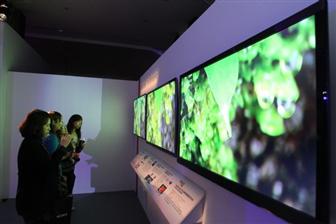In response to China-based LED maker Sanan Optoelectronics' investment of NT$2.35 billion (US$80.4 million) in Formosa Epitaxy, some players in Taiwan's LED supply chain have expressed their worries that Formosa Epitaxy may benefit from the investment in the short run, but will suffer large negative impacts in the long run due to technology transfer to Sanan.
Taiwan-based LED makers such as Epistar and Everlight have been conservative about China-based investment in Taiwan-based firms. Nevertheless, Formosa Epitaxy believes the cooperation will bring benefits to both parties. Market observers have been split on Taiwan-based firms having China-based investment. The pessimistic ones noted that China-based firms have been using extremely low quotes to become suppliers for Taiwan-based packaging houses and although Taiwan-based firms are still leading in terms of technology, once China-based investment enters Taiwan firms, that advantage will be lost.
According to Frank Chien, chairman of Formosa Epitaxy, Sanan used to be one of the firm's competitors, but Sanan will now become a shareholder with 19.9% of shares. The two firms will become strategic partners.
Chien added that Formosa Epitaxy has international distribution channels but its capacity has been relatively small. Sanan is China's leading LED firm with large capacity, competitive cost, and profitability. If the cooperation means leveraging Sanan's cost and Formosa Epitaxy's quotes, the relationship will be beneficial. In addition, Sanan has the largest market share in China, which can help Formosa Epitaxy enter the market. Sanan can also enter the international market through Formosa Epitaxy's distribution channels.
The investment will help Formosa Epitaxy to expand capacity and keep professionals in Taiwan, stated Chien. In the past, Taiwan-based firms have been eager to invest in China-based companies, but now it is the other way around, said Chien.
Xiucheng Lin, chairman of Sanan, noted that Formosa Epitaxy is Taiwan's second largest LED epitaxial wafer firm with strong R&D capabilities and 190 patents under its belt. Sanan has around 200 patents. The cooperation will strengthen both firms, said Lin.
According to Digitimes Research, Sanan originally planned to have all 107 MOCVD tools begin production in 2011 and add 100 more to ramp up its production capacity to around 200 units in 2012. Due to a downturn in the LED chip market, the firm decided to delay capacity expansion. Nevertheless, by the end of first-half 2012, 107 units of MOCVD equipment had begun production. Market observers estimate the alliance will increase the total number of equipment between the two firms to around 300 units, exceeding Epistar's 254 units.

Xiucheng Lin, chairman of Sanan (left), and Frank Chien, chairman of Formosa Epitaxy (right)





